Is It Really Hard to Make Money as an Auto Parts Supplier?
"The days are tough for car manufacturers," has now evolved from a sentiment expressed by individual brands to a tacit norm within the industry. Recently, a report by Gaishi Automotive analyzing the financial statements of 17 listed car companies revealed that more than half of them experienced a decline in net profit in the first half of 2025, further confirming this situation. As the chill of business operations becomes apparent among complete vehicle manufacturers, the ripple effect throughout the industry chain raises a key question: Are automotive parts suppliers, positioned in the upstream core segment, also struggling to make profits?
The answer lies within the waves of industrial transformation. As the automotive industry surges forward with electrification and intelligence, automotive parts suppliers are undergoing a profound "value reshaping." The financial report data from the first half of 2025 for numerous suppliers reveals the true picture of the industry: the once "collective growth" trend is fading, replaced by increasingly notable performance differentiation—some companies earn nearly 170 million yuan a day, some see net profits soar several times year-on-year, while others find themselves in a predicament of increased revenue without increased profit, or even with continuously expanding losses.On one side is the celebration of emerging sectors, while on the other side is the pressure of transformation pains. Behind this divide is not only the inevitability of industrial changes but also a key test of corporate strategic determination and transformation wisdom.
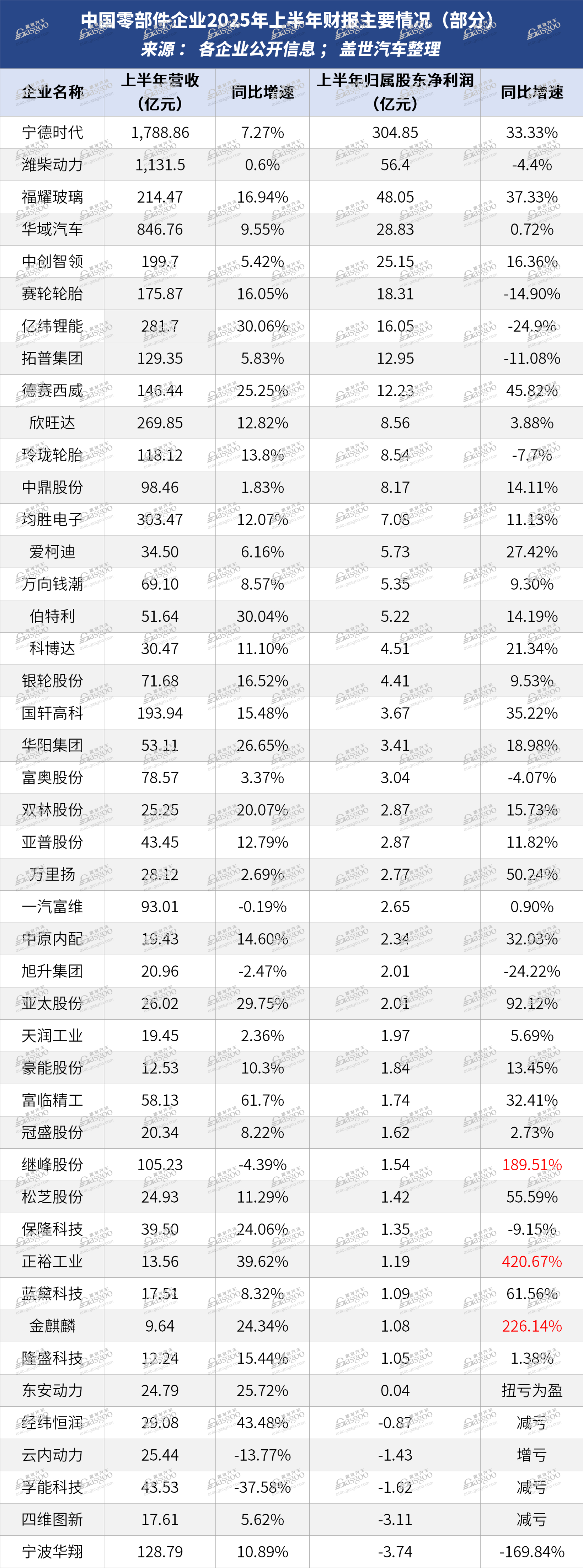
Performance differentiation is intensifying; those who can earn are still earning significantly.
According to data from Tonghuashun, as of September 1, 2025, among the 251 listed auto parts companies that have disclosed their 2025 semi-annual reports, 126 companies achieved growth in both revenue and net profit, accounting for just over half.
According to Wind data, as of August 28, 2024, among the 243 listed auto parts companies that have disclosed their 2024 semi-annual reports, over 70% of the companies have achieved year-on-year growth in revenue and net profit attributable to the parent company.
Despite some time dimension discrepancies, it is still clear that in the first half of this year, the performance of automotive parts listed companies has further diverged compared to previous periods. Recently, Gaishi Automobile compiled the financial report data of nearly 50 automotive parts listed companies for the first half of the year, revealing that some companies have made significant profits while others are deep in losses.
The most profitable is clearly CATL, which achieved a revenue of 178.886 billion yuan in the first half of the year, a year-on-year increase of 7.27%, and a net profit attributable to the parent company of 30.485 billion yuan, a year-on-year increase of 33.33%. The profit growth rate far exceeds the revenue growth rate, indicating that CATL not only sells more but also earns more. Converted, CATL makes nearly 170 million yuan per day in the first half of the year, truly deserving the title of "King Ning".
Weichai Power ranked second, achieving a revenue of 113.15 billion yuan in the first half of the year, a slight increase of 0.6% year-on-year, and a net profit attributable to shareholders of 5.64 billion yuan, a decrease of 4.4% year-on-year. It is worth noting that as a leading supplier in the power system industry, Weichai Power had long maintained its position at the top of the net profit ranking in China's parts industry. However, after being surpassed by CATL for the first time in 2021, the gap between the two has been widening year by year.
In the first half of the year, Fuyao Glass's revenue exceeded 20 billion yuan for the first time, reaching 21.447 billion yuan, a year-on-year increase of nearly 17%. Although there is a significant gap in revenue scale compared to the aforementioned two companies, Fuyao Glass's profitability demonstrates strong competitiveness, particularly with its outstanding gross profit margin, highlighting its solid profit levels.
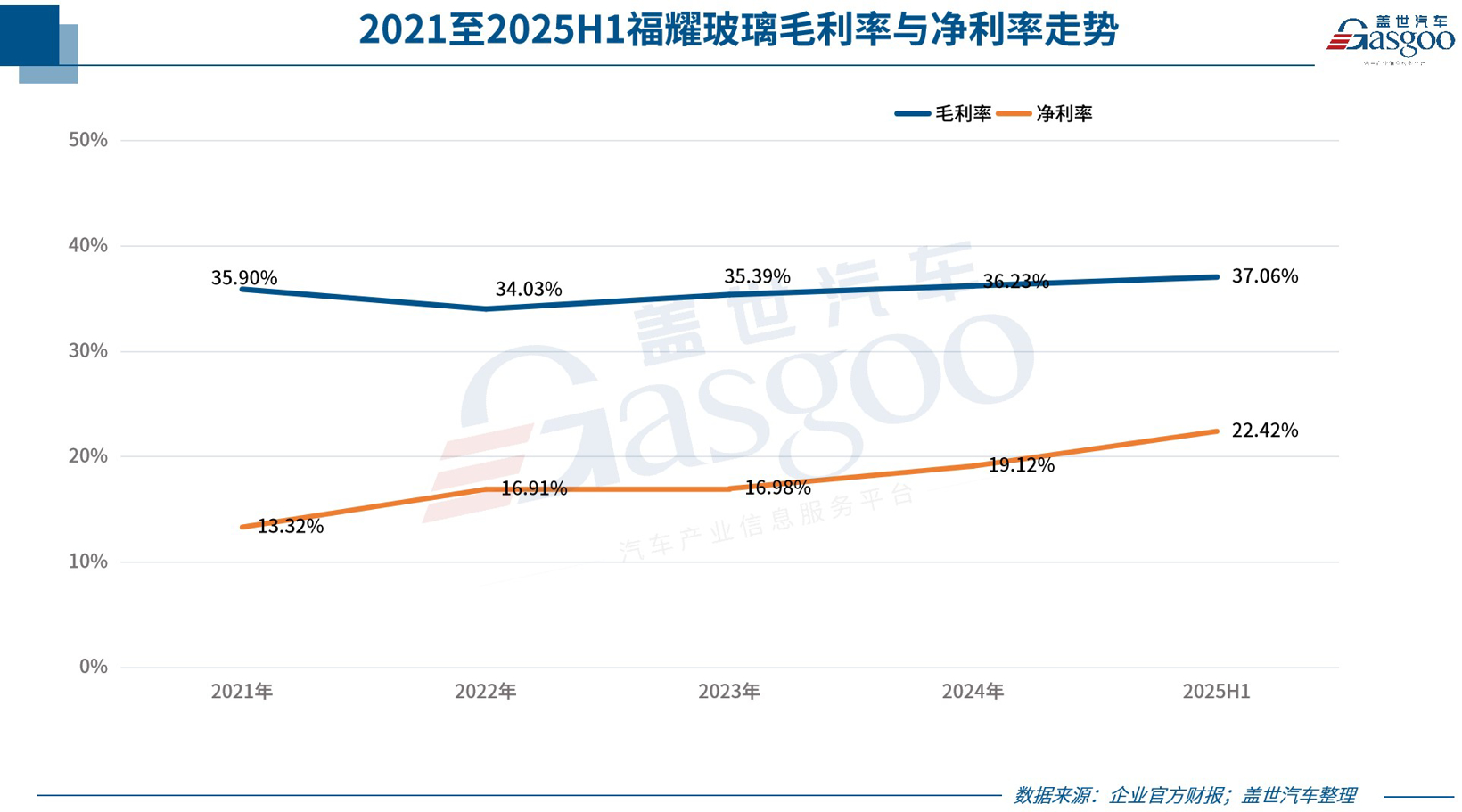
In the first half of the year, Fuyao Glass reported an overall gross profit margin of 37.06%. Among its main products, the automotive glass business maintained a stable gross profit margin of 30.9%, reflecting an increase of 0.58 percentage points compared to the same period last year. The float glass business achieved a significantly higher gross profit margin of 39.4%, marking a substantial year-on-year increase of 3.85 percentage points. Supported by these excellent profit margins, Fuyao Glass's net profit attributable to shareholders reached 4.805 billion yuan in the first half of the year, representing a significant year-on-year growth of over 37%.
Huayu Automotive remains at the forefront, achieving revenue of 84.676 billion yuan in the first half of the year, a year-on-year increase of 9.55%, and a net profit attributable to the parent company of 2.883 billion yuan, a slight increase compared to the previous year. As a comprehensive automotive parts supplier controlled by SAIC Motor Corporation, Huayu Automotive has adhered to a "neutralization" strategy in recent years, continuously expanding its external customer base. In 2015, the revenue ratio from automotive customers outside of SAIC was only 38.5%, which has increased to 63.7% in the first half of this year, a growth of 25.2 percentage points, demonstrating significant effectiveness in diversifying its customer structure. Specifically, the top ten external customers of Huayu Automotive in the first half of the year (excluding SAIC) include BYD, Seres, Geely, Chery, Xiaomi, and Xpeng, further confirming the reduction in reliance on a single customer.
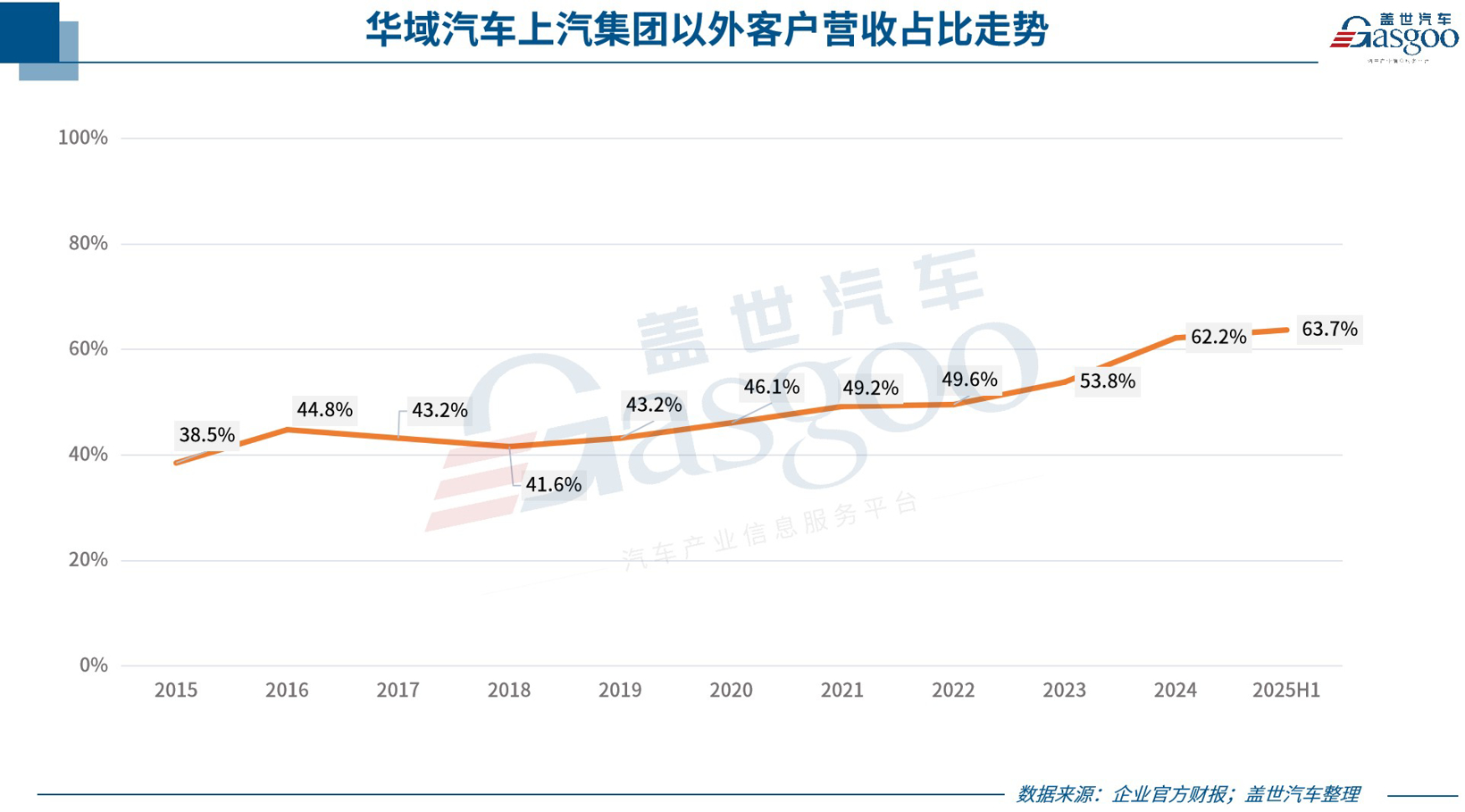
Among the companies in this statistics, the highest growth rate belongs to Zhengyu Industrial. In the first half of the year, it achieved a revenue of 1.356 billion yuan, a year-on-year increase of 39.62%, and a net profit attributable to shareholders of 119 million yuan, a staggering increase of over four times year-on-year. In addition to Zhengyu Industrial, companies such as Jinqilin and Jifeng Co., Ltd. also saw their net profits double, with growth rates around two times.
In stark contrast, the net profits of some companies have plummeted significantly. For instance, Ningbo Huaxiang achieved a revenue of 12.879 billion yuan in the first half of the year, marking a year-on-year increase of 10.89%. However, the net profit attributable to shareholders was -374 million yuan, a significant year-on-year decrease of 169.84%, indicating a clear trend of increased revenue but not increased profit.
FuNeng Technology, Jingwei Hengrun, Four-Dimensional Map New, and Yunnei Power also reported losses, with Yunnei Power particularly affected, posting a loss of 143 million yuan in the first half of the year, a year-on-year increase in loss of 43.18%. Of course, there are some companies that have not fallen into a loss situation but have performed below the same period last year, such as Sailun Tire, Yiwei Lithium Energy, Top Group, and Linglong Tire.
The speed of transformation determines profit or loss, and betting on the right new track is the real skill.
Certainly, among the companies included in this statistic, the performance changes of some companies have some "special reasons." For example, the significant decline in net profit of Ningbo Huaxiang is mainly due to the impact of the divestiture of its European business. Dong'an Power's net profit attributable to the parent company turned positive, but the net profit excluding non-recurring items still showed a loss, mainly due to the impact of asset disposal from factory relocation. The decline in net profit of EVE Energy is partly influenced by the provision for bad debts of Nezha Automobile.
Apart from these special cases, the intrinsic logic behind the differentiation in performance among auto parts companies is actually not difficult to understand. In the current wave of profound transformation towards electrification and intelligence in the automotive industry, a company's ability to grasp emerging growth areas and the efficiency of its transformation of traditional businesses directly impact the stability of its profit structure and the sustainability of future growth.
CATL's performance is highly convincing, with its net profit "far ahead" primarily supported by its consistently high battery installation volume and market share. According to data from South Korean market research firm SNE Research, CATL's battery installation volume in the first half of the year increased by 37.9% year-on-year to 190.9 GWh, with a market share of 37.9%, continuing to lead the industry. According to data from the Gasgoo Global Automotive Industry Data Platform, in addition to Chinese car brands such as Zeekr, AITO, Li Auto, and Xiaomi, global mainstream automakers such as Tesla, BMW, Mercedes-Benz, and Volkswagen Group also widely use CATL's batteries.The Global Automotive Industry Big Data Platform has recorded numerous supporting information about automotive parts suppliers. For details, please refer to:autodata.gasgoo.com)。
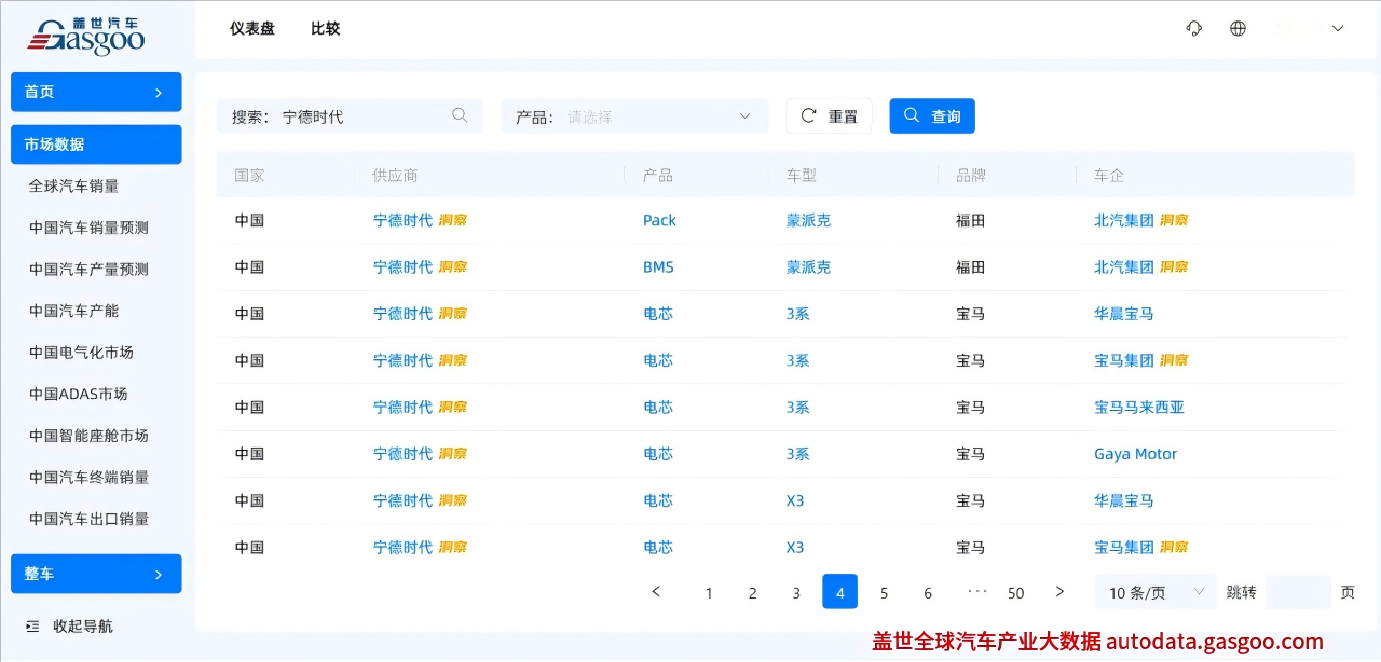
This market advantage is inseparable from CATL's own progress. Over the years, it has maintained high-intensity product research and development investment, continuously launching new iterations. For example, this year it introduced major products such as the second-generation Shenxing ultra-fast charging battery, the Xiaoyao dual-core battery, and the sodium-ion battery for passenger vehicles, continuously enriching its product matrix and consolidating its core competitiveness with strong technological capabilities.
In addition to CATL, companies such as Guoxuan High-Tech and Xinwangda have also seen a rise in their performance, further confirming the value of focusing on emerging fields. Companies like Fuyao Glass, Huayu Automotive, Desay SV Automotive, and Joyson Electronics have shown a certain leading advantage in transformation efficiency. Against the backdrop of the "New Four Modernizations," these companies have achieved growth in both revenue and profit, securing a large number of orders related to new energy, demonstrating strong execution in their transformation and adaptability to the market.
Fuyao Glass is undoubtedly a strong example of this trend. The wave of intelligentization is reshaping the automotive value chain, and automotive glass has evolved from a traditional "shelter from wind and rain" component to an important interactive interface within the smart cockpit. Fuyao Glass is seizing this trend, continuously increasing its R&D investment, and has launched a series of high-value-added products, including intelligent panoramic sunroof glass, adjustable light glass, heads-up display glass, and ultra-insulating glass. According to financial report data, in the first half of the year, the proportion of these high-value-added products increased by 4.81 percentage points compared to the same period last year, driving the overall gross margin and average price of the company upward.
According to Gasgoo Auto, in the first half of the year, 80% of the business lifecycle orders newly acquired by Huayu Automotive were for new energy-related vehicle businesses. The core driving force behind Desay SV's performance growth comes from the synergistic efforts of its two main businesses—intelligent driving and intelligent cockpit. In the first half of the year, the total lifecycle value of new fixed-point projects obtained by Joyson Electronics was approximately 31.2 billion yuan, of which new orders related to new energy vehicles exceeded 20.6 billion yuan, accounting for more than 66%.
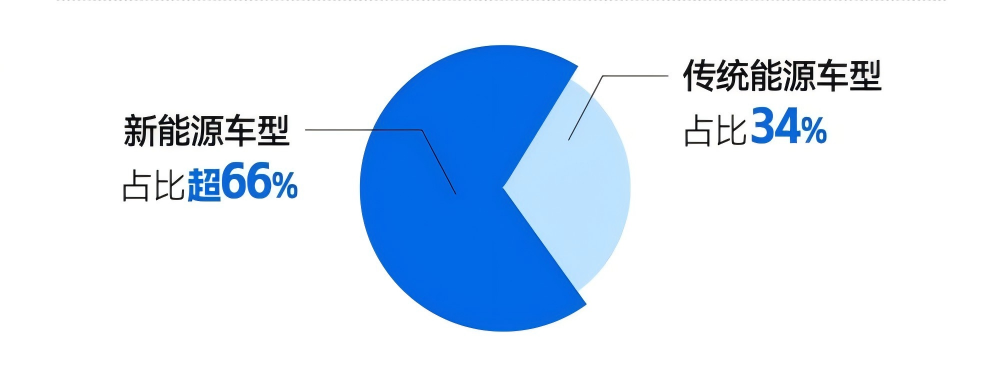
Image source: Screenshot of the official poster from the company.
Relatively speaking, those enterprises that still rely on traditional businesses and have a slower transformation process face greater performance pressure. For example, as mentioned earlier, Yunnei Power, and Dong'an Power, although they achieved a net profit attributable to shareholders of 3.9212 million yuan in the first half of the year, turning a profit year-on-year, the profit mainly depended on non-recurring asset disposal gains. The net profit attributable to shareholders after deducting non-recurring items still showed a loss of 61.134 million yuan, with the loss margin expanding year-on-year.
It should be noted, however, that many component companies, including Yunnei Power and Dong'an Power, have not remained stagnant. Instead, they have actively adjusted their business structures and increased investment in emerging fields to actively break the inherent development pattern.
It is reported that while consolidating its advantages in traditional business, Yunnei Power is also actively expanding into the new energy sector. On one hand, it is developing a comprehensive product strategy that integrates both traditional and new energy power sources, continuously increasing the development and promotion of new energy products such as hybrid, range-extended, dual-fuel, and hydrogen fuel cells. On the other hand, it is actively cultivating emerging business projects such as intelligent agricultural machinery and L4 level intelligent delivery vehicles.
Dong'an Power's layout in the new energy sector is also continuously advancing. By the first quarter of 2025, it has obtained 51 new market "fixed-point agreements," with an expected project lifecycle of 5 to 10 years and a total sales volume of up to 1.5 million units. Among these, the number of projects related to the new energy market has reached 12, with a planned sales volume expected to hit 1 million units.
Weichai Power adheres to a "multi-pronged approach," comprehensively laying out in areas such as pure electric, hybrid, and fuel cells to form a diversified technological route. Based on the current favorable growth trend and technological reserves, it has clearly set a target to more than double its new energy revenue by 2025.
In summary, the performance differentiation of automotive component companies under industrial transformation is not coincidental; its core logic clearly points to the ability to grasp emerging growth drivers and the efficiency of transforming traditional businesses. In the future, as the industrial transformation continues to deepen, the differentiation within the component industry may further intensify. However, whether for leading companies that have already taken the lead or for the striving followers undergoing transformation, their development practices have proven that only by centering on technological innovation, guided by market demand, and actively embracing change while efficiently adjusting their pace can they solidify their profit foundations and achieve sustainable growth amidst industry waves.
Accelerating overseas expansion, overseas business becomes a growth engine.
In recent years, automotive parts suppliers have accelerated their expansion into overseas markets, enhancing their global presence through overseas factory establishment and mergers and acquisitions. This strategy has yielded significant results in the financial reports for the first half of 2025, with the overseas business of many companies becoming a critical driver of performance growth.
From the perspective of specific segments and company performance, as a leading exporter of automotive chassis system components in China (primarily focused on the automotive aftermarket), Zhejiang Vie Science & Technology Co., Ltd. achieved overseas operating income of 1.66 billion yuan in the first half of the year, accounting for 81.6% of total revenue, representing a year-on-year increase of 11%.
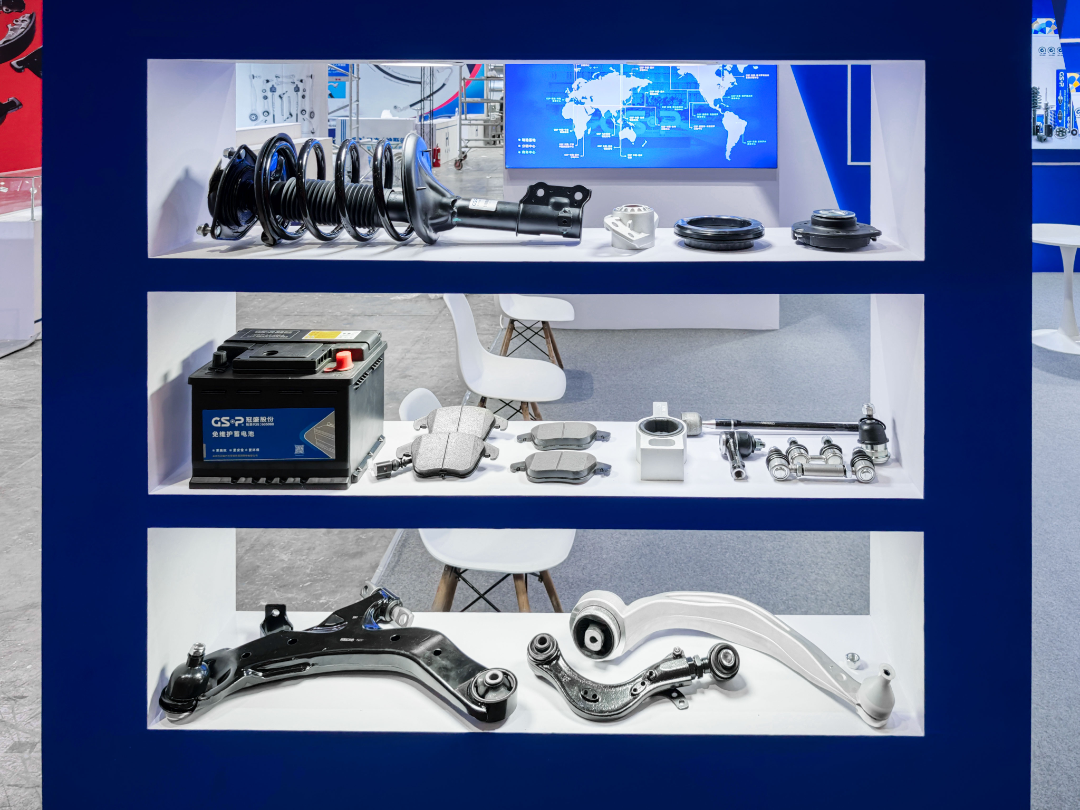
Image source: Guan Sheng Corporation
The overseas business growth of the tire industry is also impressive. Public statistics show that from 2012 to 2023, the overall revenue of the domestic tire industry's overseas business increased from 25.96 billion yuan to 55.67 billion yuan, with a compound annual growth rate of 7.2%. The performance in overseas markets has become crucial for tire companies to achieve high revenue and high profits.
Despite several domestic tire companies facing a situation of increased revenue without increased profit in the first half of 2025, the importance of the overseas sector remains prominent. For instance, Sailun Tire reported a revenue of 13.41 billion yuan in the first half of the year, marking a 18.7% year-on-year increase, with overseas income accounting for 76.3% of the total.
In the automotive electronics sector, Joyson Electronics' revenue surpassed the 30 billion RMB mark for the first half of the year, reaching 30.347 billion RMB, a year-on-year increase of 12.07%. The net profit attributable to the parent company was 708 million RMB, a year-on-year growth of 11.13%. Behind this performance, Joyson Electronics has long completed its global industrial layout, with the majority of its revenue coming from international markets. In the first half of this year, Joyson Electronics' foreign market revenue was 22.542 billion RMB, accounting for 74.28% of the company's total revenue. For 2023 and 2024, this proportion is expected to be 75.65% and 74.09%, respectively.
Desay SV's overseas revenue, although still relatively low in this sector, is showing strong growth. In the first half of the year, its overseas business achieved revenue of 1.038 billion yuan, representing a year-on-year increase of 36.82%, accounting for approximately 7.1% of total revenue, which is higher than the same period last year.
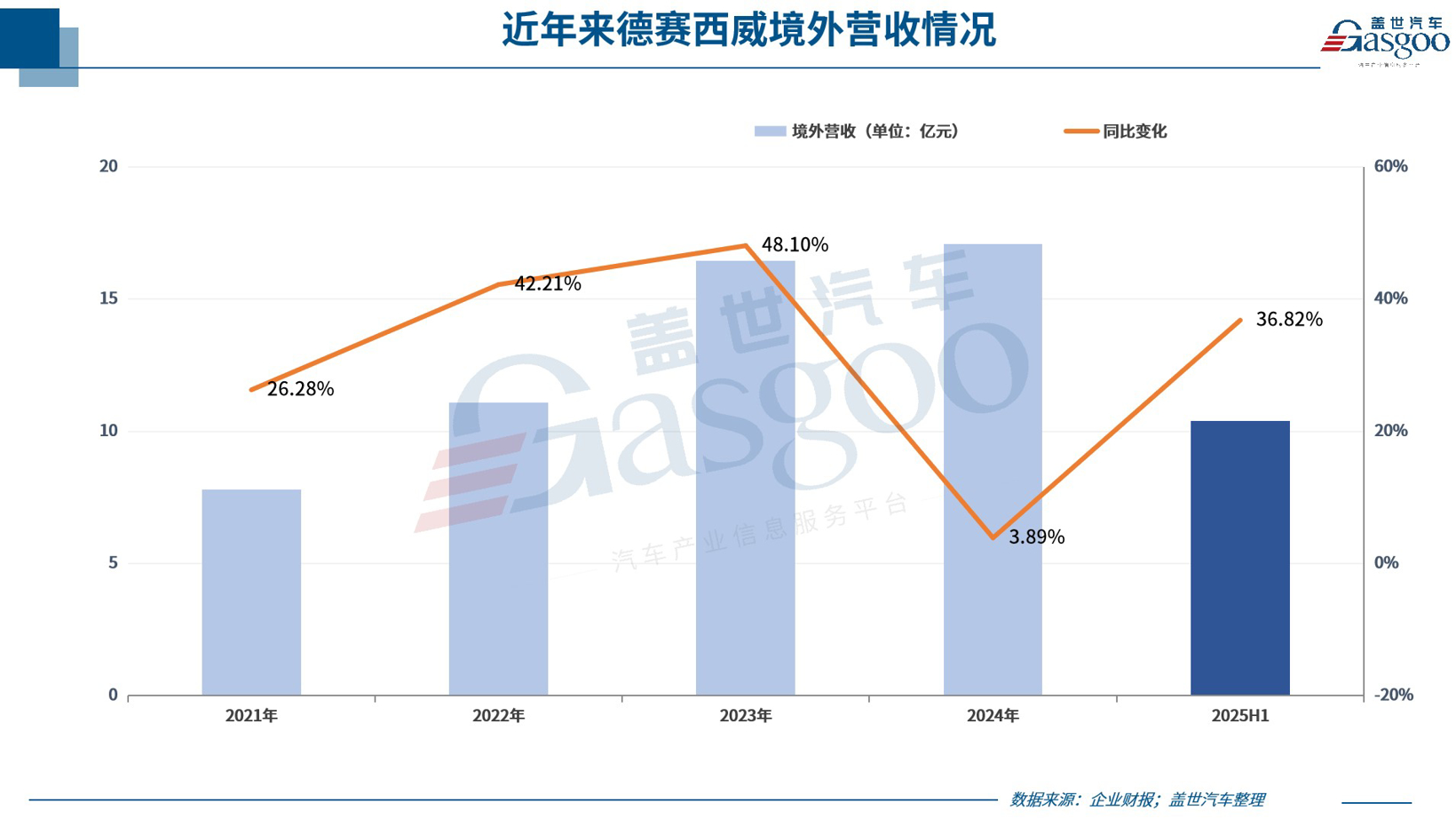
In the first half of the year, Guoxuan High-Tech, a power battery company, achieved a revenue of 19.394 billion yuan, a year-on-year increase of 15.48%, and a net profit attributable to shareholders of 367 million yuan, a year-on-year increase of 35.22%. Behind this performance, Guoxuan High-Tech's overseas business has steadily made breakthroughs. Data shows that in the first half of the year, Guoxuan High-Tech achieved overseas revenue of 6.418 billion yuan, a year-on-year increase of 15.79%, accounting for 33% of the company's total revenue.
Behind the good performance is the continuous increase in investment by these companies in overseas market expansion. Looking to the future, they remain committed to advancing their globalization strategy.
According to reports, CATL is steadily advancing the construction of its Hungary factory, the joint venture factory with Stellantis in Spain, and the battery industry chain project in Indonesia. In addition, its successful listing on the main board of the Hong Kong Stock Exchange has established an international capital platform, which will help further integrate into the global capital market and accelerate the promotion of its globalization strategy.
Gotion High-tech's planned capacity includes the second phase of construction in Vietnam, which is expected to be advanced in the third quarter of 2025. Additionally, there are plans in regions such as Morocco and Slovakia.Key projects, among whichThe land leveling of the Moroccan factory has been completed, and construction is planned to start in September, with production commencing by the end of 2026. The facility is planned to have a production capacity of 20 GWh for battery cells and supporting materials. The land transfer for the Slovakian factory has been completed, with construction scheduled to begin in October and production starting in early 2027.
Fuyao Glass has built a unique competitive advantage through its global, having established production bases and business institutions in 12 countries, including 21 automotive glass factories, 6 float glass factories, and 5 automotive aluminum trim factories. According to a certain brokerage firm's forecast, in the next 3 to 5 years, Fuyao's market share in the European automotive glass market is expected to significantly increase from the current 21% to 40%, becoming an important growth driver.
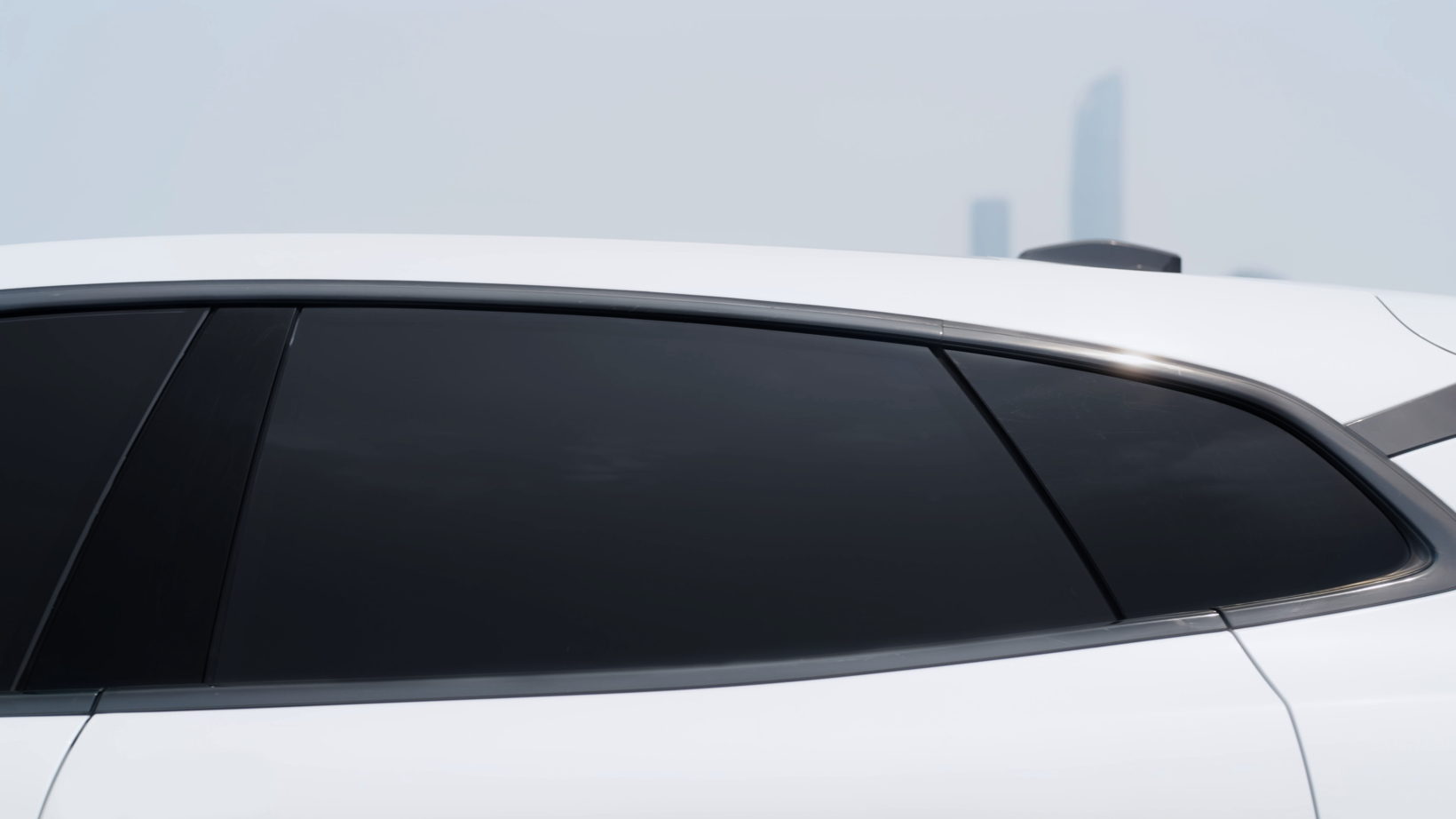
Image Source: Fuyao Group
Desay SV in its latest strategic plan released in April this year has identified "courage to go abroad" as one of its four key directions, clearly focusing on core overseas markets such as Europe, Japan, and Southeast Asia, and formulating customized expansion strategies for different regions. Currently, most target customers have achieved breakthroughs in the first phase of business and are about to enter the expansion period. At the same time, the company will accelerate its overseas expansion through diversified models such as technological cooperation, channel cooperation, joint ventures, and mergers and acquisitions.
Jifeng Corporation accelerates its globalization through mergers and acquisitions. Its main business includes automotive seats and interior systems, covering passenger cars and commercial vehicles. By acquiring German company Grammer, it further expands its global market and forms an integrated solution of "complete seats + interiors."
In the process of global expansion, some enterprises are also optimizing their strategies, even proactively "subtracting" to focus on their core areas.
In the first half of 2025, Ningbo Huaxiang's long-standing burden of its European operations was officially divested. On May 30th, the company completed the sale of 100% equity of six European subsidiaries to the German Mutares Group. Following this divestiture, the main European operating entities will no longer be included in the company's consolidated financial statements, thoroughly eliminating the "negative assets" that have been consuming resources and dragging down profits for many years.
It is worth noting that Ningbo Huaxiang has not "permanently exited" the European market, but rather has made a "strategic temporary departure" that leaves room for a return when conditions are ripe. At this stage, it is more focused on releasing cash flow and management resources through asset divestiture, concentrating on high-growth sectors and emerging industries in China to achieve an efficient shift in its operational focus. Once the divestiture is completed, the company's profit structure will be "purified," allowing the profitability of its core business to be presented more accurately, which is expected to clear data obstacles for subsequent valuation recovery.
Overall, overseas markets have become an important support for the performance growth of many Chinese automotive parts companies. Behind this is the ongoing effort of these companies to enhance their global through various paths such as establishing overseas factories, cross-border mergers and acquisitions, and technological cooperation. In the future, as the global capacity layout continues to take shape and regional market strategies are precisely iterated, Chinese automotive parts companies are expected to further increase their global market share and solidify their competitive advantages in the reshaping of the global automotive industry landscape.
Summary of the World:
The financial report data for the first half of 2025 has clearly underscored the development phase of the automotive parts industry: the era of "effortless success" is over, and the era of "meticulous cultivation" has arrived. The divergence in performance has never been a matter of luck, but rather the result of the ability to grasp industry trends, the speed of responding to technological iterations, and the depth of global market deployment. CATL's technological leadership, Fuyao Glass's product upgrades, and leading companies' deep global engagement validate the value of "choosing the right track" and "actively seeking change," while the transformation explorations and strategic choices of traditional companies also demonstrate the industry's determination to break through.
In the future, as the continuous deepening of the automotive "new four modernizations" and the restructuring of the global market progresses, industry differentiation may further intensify, but opportunities are also hidden within—precise focus on emerging fields, efficient layout of global production capacity, and continuous reinforcement of core competencies will become the key for component companies to navigate through cycles.
【Copyright and Disclaimer】The above information is collected and organized by PlastMatch. The copyright belongs to the original author. This article is reprinted for the purpose of providing more information, and it does not imply that PlastMatch endorses the views expressed in the article or guarantees its accuracy. If there are any errors in the source attribution or if your legitimate rights have been infringed, please contact us, and we will promptly correct or remove the content. If other media, websites, or individuals use the aforementioned content, they must clearly indicate the original source and origin of the work and assume legal responsibility on their own.
Most Popular
-

Zf asia-pacific innovation day: Multiple Cutting-Edge Technologies Launch, Leading Intelligent Electric Mobility
-

Mexico officially imposes tariffs on 1,400 chinese products, with rates up to 50%
-

List Released! Mexico Announces 50% Tariff On 1,371 China Product Categories
-

Fire at Sinopec Quanzhou Petrochemical Company: 7 Injured
-

Argentina Terminates Anti-Dumping Duties on Chinese PVC Profiles! Kingfa Technology & Siemens Sign Digital and Low-Carbon Cooperation Agreement






